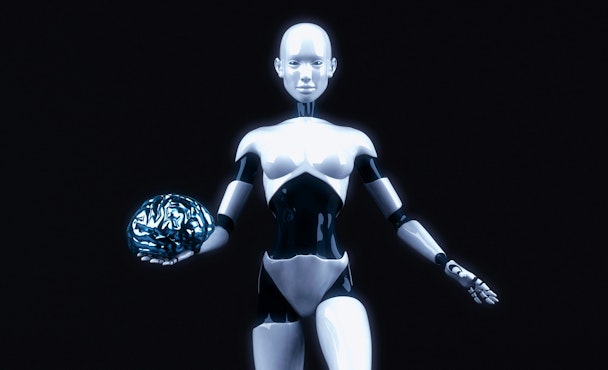Creatives can help train sexism out of AI
AI is trained on datasets laced with bias, says Andi Davids of Bulletproof. There are ways to address it – and creatives have a part to play.

The AI industry is staffed mainly by men, while the data it uses is full of historical bias / Julien Tromeur via Unsplash
We humans love a shortcut, and for good reason. Heuristics – the mental models we use to quickly make decisions – were incredibly useful survival tools back when we had to suss out which berries we could eat and which animals could eat us.
But these shortcuts, and their resulting cognitive biases, can be problematic in today's complex social landscape where quick judgments have the power to reinforce stereotypes and fuel inequality.
But here’s where it gets interesting: machine learning and AI rely on the same heuristic function, sourcing incomplete data derived from past knowledge and experience to provide an answer as quickly as possible. Consequently, since AI is built and powered by humans, it stands to reason that it would not only reflect our biases, but amplify them due to its self-learning nature. Gender is a prime example.
AI has inherited the bias of its datasets
The world itself often seems designed for men, and AI, learning from its environment, adopts this same male-centric perspective.
Not only do the teams that develop and train AI systems skew heavily male, with men making up to 76% of the global workforce, so do its dataset. From medical research that’s historically focused more on men to the more frequent citation of male sources in academia; from media dominated by male directors, journalists, and artists to the proliferation of naked or nearly naked women on the internet – datasets perpetuate the male gaze and voice.
Ask an image-making AI to depict a judge and only 3% of the images it creates are of women. Type in nurse, and you’re much more likely to get an image of a woman, and a sexualized one at that.
The issue goes far deeper than just gender, though. Race, culture, and historical biases all influence the data that informs AI development. This can lead to skewed creative outputs, where white men are over-represented in professional roles and women of color are disproportionately placed in imagery of lower-paying jobs like social work.
The creative community has a responsibility to represent
As AI becomes more sophisticated and less discernible from reality – evidenced twice in the last month alone with deepfakes used to both sexually abuse a pop icon and drum up political support for a controversial candidate – it will not only have the ability to reflect our world in the future, but also shape it.
Which is why we, the creative community, hold such a significant responsibility. As cultural architects, we shape narratives, codify zeitgeist and ultimately create social meaning. The media we consume, the products we use, the way people navigate their lives – all are influenced by the stories we tell and the images we project.
Therefore, it’s imperative for everyone involved in creative endeavors, whether agency or client side, to be vigilant about biases, be they personal, societal, or technological. It’s only when we question the limitations of technology and push for a more inclusive future that we can ensure the stories we tell and the worlds we build are a true reflection of the rich tapestry of human experience.
The human touch shapes AI's output
If the industry is using AI and it's relying on past data patterns, our ability to generate truly novel ideas is limited, our imagination hindered and it becomes more difficult to challenge established norms.
As creatives using AI, we must check both our own biases and also the ways we're utilizing these tools. The true potential of AI lies in its creative possibilities, and these will be unlocked through diverse use cases. Creativity resides in the creative, not the tool itself nor the outputs it generates. The quality and level of creative expression will ultimately be determined by how we, as a community, leverage it.
Our societies are built upon intricate cultural norms and ideas of representation. To create a more equitable, safe, and desirable world for all, we need to disrupt the inherent bias in AI. Thankfully, we have agency, because our creative output will become AI’s next input.
Content by The Drum Network member:

Bulletproof
Bulletproof is a brand agency with studios in London, New York, Singapore, Amsterdam, Sydney, Shanghai and Melbourne. Proudly independent, we exist to vanquish mediocrity...
Find out more
